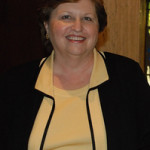Landing a board seat requires a more subtle strategy than a job search, because they want to find youBy Sarah E. Needleman , From The Wall Street Journal Online
What’s the best route for women to reach the corporate boardroom? Ask those who already have a seat at the table, and they offer a combination of strategies that both burnished their résumés and got them noticed by board recruiters. Among them: volunteer work, director-training programs, public speaking and networking. But they also say they had to sacrifice time, and in some cases money, to achieve their goals. Landing a board seat requires a more subtle strategy than a job search, says Wendy Alfus-Rothman, an executive coach in New York. “If you want a job, you can pursue a company, but you can’t apply quite the same directness with boards, because they want to find you,” she says. “If you want to be on a board, you must be invited to the party.” The numbers tell a story of slow progress. Women held 14.7% of board seats at Fortune 500 companies in 2005, up from 13.6% in 2003 and 6.9% in 1995, according to a report from Catalyst, a New York-based nonprofit group that researches women’s career issues. The good news for women is that corporate boards are seeking additional female members to benefit from more-diversified decision making, says Julie Hembrock Daum, North American board-services practice leader at executive-search firm Spencer Stuart in New York. “If there are two candidates who are equally qualified and one is female, most companies would prefer to recruit the woman,” she says. To take advantage of those opportunities, though, many women may need to change their mind-set. While strategies for landing a board seat are pretty much the same for men and women, women typically are less comfortable carrying out some of them, says Ms. Alfus-Rothman. “It’s not always in their nature to be self-promoting,” she says. “Women hope the world will figure out how brilliant they are through their work, when in truth, it’s their job to get the word out.” One way for a woman to increase her chances of landing a seat on a corporate board is to serve on the boards of nonprofit organizations, start-up companies, industry or professional associations or community groups, says Erin Ennis, a vice president of finance in Tallahassee, Fla., for real-estate developer St. Joe Co. and a director on the board of Tallahassee Memorial HealthCare. ‘Level of Engagement’Trina Gordon, managing director of recruiting firm Boyden Global Executive Search in Chicago, says her volunteer work on three nonprofit boards and three small-business advisory groups helped make her a stronger candidate for corporate board posts. “Boards look for that level of engagement,” says Ms. Gordon, 50, who serves on three corporate boards: at Boyden; at WHCA Inc., a privately held investment and consulting firm in Chicago; and at consulting firm RAM Fund Inc., a WHCA unit, also based in Chicago. “By virtue of being a leader on a nonprofit board, they know you understand the strategic planning, marketing, capital and operating budget process, as well as exercising good-governance practices.” Ms. Gordon also headed several subcommittees of nonprofit boards. “That early insight into how an organization’s budget and planning process works was invaluable,” she says. The experiences also helped her lay the foundation for long-lasting business relationships. “They allowed me a ground-floor opportunity to get to know people who were becoming leaders in social, civic and community circles,” she says. Ms. Ennis recommends that volunteers offer to head a subcommittee or task force with fiscal responsibilities, to gain a deeper perspective on financial issues and to stand out. “Women tend to go for the soft jobs — marketing, [public relations], special events,” she says. “But a woman distinguishes herself when she signs up for treasurer or head of finance.” Board candidates should take on only as much volunteer work as they can handle, cautions Ms. Ennis, who is 47. “If you don’t learn to say no, you can be overcommitted very easily,” she says, and your work could suffer. “If you’re perceived as not doing a good job, you can develop a bad reputation and that can hurt you.” Ms. Gordon estimates she devoted 30 hours a month to her volunteer activities, at a time when she was helping to raise her husband’s twin sons, then in their teens. As a result, she says she often struggled to attend the track meets the boys competed in. “Some [board] meetings took place in the evenings, or if they were during the day, it would mean I’d often be working into the night and on weekends,” she says, to catch up with her full-time job. Many women board members say attending director-training programs enhanced their board prospects. Hala Moddelmog, chief executive officer of the Susan G. Komen Breast Cancer Foundation, has attended three in the past 18 months. Two of them — one run by a university and another by a trade group — focused on corporate-governance issues and offered tips such as how to spot red flags in a company’s financial reports. At the third, a so-called director boot camp, she received one-on-one counseling on positioning herself for a board seat, she says. Ms. Moddelmog, who had already served on more than a dozen nonprofit boards and advisory groups when she attended the programs, says the training bolstered her confidence in her candidacy for positions on for-profit boards and increased her marketability. “Knowing I had taken the time to become educated on what it means to serve on a board definitely helped” her feel like a stronger candidate, she says. “It’s listed in my résumé and was definitely something that I talked about in the interviews.” Ms. Moddelmog says the three programs combined took up seven days and cost about $7,000, not including travel expenses, such as airfare, hotel, meals and local transportation. Since completing them, she has taken two corporate board positions, at HyperActive Technologies Inc. and Fiesta Brands Inc. When choosing a director-training program, women should make sure the agenda offers more than the kind of practical advice that might be found in a book, says Ms. Alfus-Rothman, the executive coach. “Many people leave these programs and say it was common sense,” she says. Anyone considering such a program should ask for references from past participants and find out how many have gone on to serve on corporate boards, she says. Also keep in mind that director-training programs don’t in themselves qualify you for board membership, says Ms. Hembrock Daum of Spencer Stuart. And while they “might show that somebody was really interested,” she says, women should enroll in these programs more for their own benefit than as a way to attract interest from board recruiters. “It’s not something that companies look for” in their searches for board candidates, she says. “You want to go to one because you want to learn — not because it’s a box to check.” Seeking the SpotlightMany women say raising their profile in their industry helped them win invitations to join boards. Carole Brookins, co-founder of Public Capital Advisors LLC, a New York-based provider of financial advice to national and municipal governments, says she gave a speech at a fertilizer-industry conference in the early 1990s when she was CEO and chairwoman of World Perspectives Inc., a Washington-based consulting firm specializing in agricultural commodities. Afterward, the president of Terra Industries Inc., a fertilizer maker in Sioux City, Iowa, introduced himself, and a networking relationship ensued. When a board seat opened at his firm a year later, Ms. Brookins, who is now 63, was invited to interview for it. She landed the directorship, her first of three corporate boardroom posts. Another way for a board candidate to gain public exposure is to get her name in the business press, says Evan Scott, an executive-search consultant who runs his own firm in Washington, Evan Scott Group International LLC. A candidate should offer herself as an expert source on the industry or field she’s in, he says. Mr. Scott, who specializes in boardroom searches, says he often combs trade magazines and newspapers for comments from or news about potential board candidates. But overexposure should be avoided, Mr. Scott says. “Too much publicity can be a turnoff,” he says. “If I keep on seeing the same person’s name over and over again, they start to become less alluring. I get the impression that this person is too busy to serve on a board or they’re in too much demand because they’re on everyone’s radar.” Being in the public eye also can draw unwanted attention, says Ms. Brookins. “You get inundated with calls from people trying to market something to you,” she says. Another pitfall of public speaking and speaking to the press is the preparation often required, she adds. Women will be more likely to learn about and be considered for board opportunities if they expand their networks, says Dale Winston, CEO of executive-search firm Battalia Winston International in New York. They can do this by joining industry associations and organizations dedicated to business networking. But they should be selective about the ones they choose, she advises. “You want to interact with peers and people above you on the corporate ladder,” Ms. Winston says. Plus, board candidates should make sure the organizations they join have members who are corporate board members, she adds. Many networking organizations charge annual membership fees, which can add up, says Ms. Winston. For example, Ms. Ennis estimates she spends about $3,000 a year on fees related to her memberships in three networking groups, though her company reimburses her for part of that, she says. Relationship building is also critical for earning complimentary peer referrals, which can carry a lot of weight for boardroom candidates, says Deborah M. Soon, vice president, executive leadership initiatives, at Catalyst. “When companies home in on one or two candidates, they’ll do a reference check from people they know and trust,” she says. “So it’s important to continuously enrich your network and meet people who can talk about you.” The most effective networking relationships are built over time, adds Ms. Soon. “What a board member looks for in a board candidate is a sense of what this person’s contribution might be and if their style and chemistry would be appropriate,” she says. “Networking is not about having a fleeting conversation…. It is a series of interactions.” Candidates seeking out professionals to network with should make a special effort to meet investment bankers, says Joyce Greenberg, a managing director and partner at Financo Inc., an investment-banking firm in New York. “Investment bankers are often asked for board recommendations,” she says, because they’re closely involved in the formation of companies. Some women’s organizations host networking and other events for aspiring corporate directors. Women Corporate Directors, a global New York-based group, runs three to four networking events a year in New York, Boston, Washington, Chicago, Atlanta, and starting this month, London. Though its 200 members are mainly women directors at public and private companies, the group welcomes women who have served as a director on a large nonprofit board, as well as women who are candidates for a board seat at a large nonprofit or public or private company. Candidates also can try reaching out to search-firm recruiters who handle board searches. In 2001, Denise Morrison, president of the U.S. soup, sauces and beverages unit of Campbell Soup Co., set up meetings with recruiters she knew at two large search firms. In the meetings, Ms. Morrison, who at the time was executive vice president and general manager at Kraft Foods Inc., says she described the kind of expertise she could bring to a company’s board. A few months later, one of the recruiters informed her about a director opening on the board of Ballard Power Systems Inc., a fuel-cell manufacturer. The recruiter arranged for her to interview for the board spot and she got it, she says. — October 12, 2006 — Ms. Needleman is associate editor at CareerJournal.com. |
||
|











